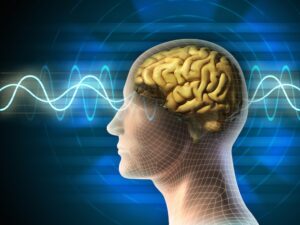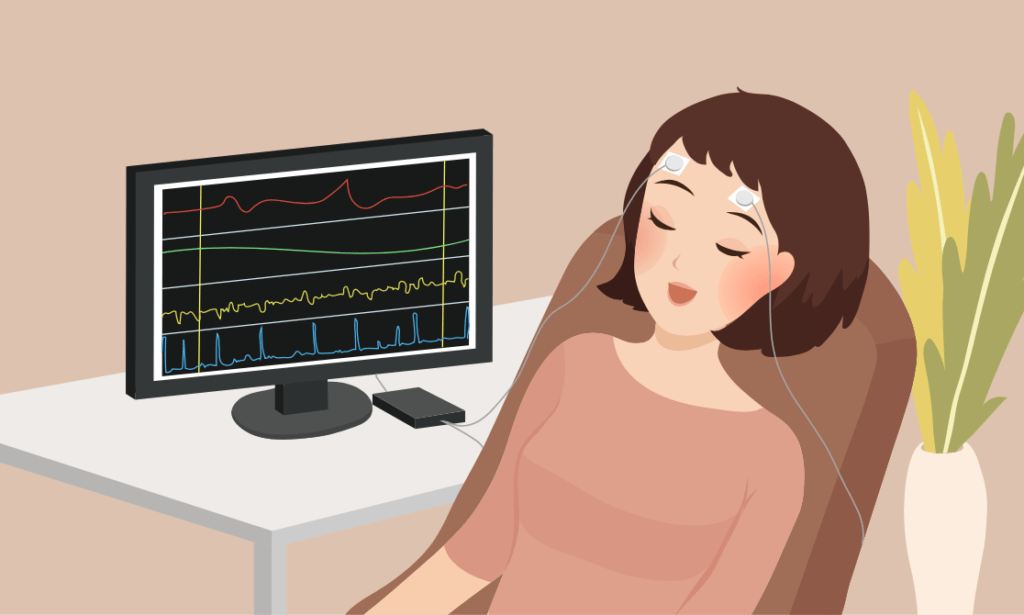Neurofeedback is a type of treatment that uses sensors to track the person’s brainwaves. This information is then used to create feedback loops that can help control or change specific behaviors. Neurofeedback is helpful for a range of conditions, including anxiety, depression, addiction, and ADHD. In this blog post, we will explore all you need to know about neurofeedback for OCD, from its history to its current use in treatment. We will also provide some tips on how you can get started using it yourself.
Contents
What is Neurofeedback?

Obsessive Compulsive Disorder (OCD) is a mental health condition that causes sufferers to have recurrent thoughts and images that they can’t shake. It can be incredibly debilitating, and often leads to problems in everyday life, like feeling stressed out or not being able to focus. Recently, there’s been a growing trend of using neurofeedback technology to help treat OCD. Neurofeedback is a form of therapy that uses technology to measure brain activity. This information can then be used to help the patient learn how to control their thoughts and emotions.
There are different types of neurofeedback devices available, but most involve electrodes placed on the scalp. The device will then send electrical signals through the electrodes to the person’s brain. These signals can be used to measure and track different aspects of brain activity.
The goal of neurofeedback is to help improve specific behaviors by altering the way the brain behaves. This can be done through either direct intervention (by adjusting the electrical signals) or indirect intervention (by changing how people think about their behavior).
Different Techniques of Neurofeedback for OCD
The different types of techniques for neurofeedback for OCD are:
Beta Training
One type of neurofeedback that is commonly used to treat OCD is Beta training. This type of neurofeedback relies on the patient’s ability to actively control the activity in their brain. By providing visual and auditory cues, patients learn to increase or decrease the number of beta waves present in their brain to regulate and improve their concentration, and focus, and decrease symptoms of OCD.
Alpha-Theta Training
Alpha-theta training is another type of neurofeedback that may be used to treat OCD. This type of training involves the patient focusing on both alpha and theta brain waves to promote relaxation and reduce anxiety levels. By providing visual and/or auditory cues, patients learn to increase or decrease the amount of alpha and theta brain waves present to reduce symptoms of OCD.
Low-Frequency Neurofeedback
Low-Frequency Neurofeedback is a type of neurofeedback training that focuses on reducing the activity in certain regions of the brain. This type of neurofeedback therapy uses electrical stimulation to guide brainwave activity and can be used to reduce stress, improve focus, promote relaxation, and more. With Low-Frequency Neurofeedback, electrodes are placed on the scalp and a low-frequency signal is generated.
This signal then interacts with the brain to create a kind of “biofeedback” loop, which helps train the brain to achieve desired states of relaxation or alertness.
How Does Neurofeedback for OCD Work?

Neurofeedback for OCD works by helping patients learn how to control their thoughts and emotions. This is done by teaching them how to use specific brainwave frequencies to reduce obsessive thoughts or compulsive behaviors.
One of the most common ways neurofeedback is used for OCD is through the use of beta waves. These waves are associated with relaxation and can be used to help decrease anxiety and promote focus.
Patients will typically wear a device that records their brain waves, and they will use it to learn how to change their frequency depending on what they’re feeling at the time. This can help them become more in control of their thoughts and emotions, which can lead to improved functioning in everyday life.
There are a few different types of neurofeedback treatments available for people with OCD, so it’s important to find a treatment that fits your individual needs. Some treatments require participants to wear devices all the time, while others may only need to be used occasionally.
It’s also important to keep in mind that not all treatments work for everyone, so it’s important to consult with a qualified therapist before starting any type of neurofeedback therapy.
What Are The Benefits of Neurofeedback For People with OCD?
There are several potential benefits to using neurofeedback for people with OCD. These include relieving symptoms, improving overall function, and training the brain to be less reliant on rituals and compulsions.
Some of the benefits of neurofeedback for people with OCD include:
- Reduced anxiety levels: When the brain learns to recognize and control the frequency of its electrical activity, it can be easier for people with OCD to manage anxiety.
- Improved focus: Neurofeedback can help people with OCD stay focused on tasks that require concentration.
- Reduced obsessive thoughts: Neurofeedback helps people learn how to change their brainwave patterns to reduce the frequency of obsessive thoughts.
- Improved functioning: Neurofeedback can help improve overall functioning for people with OCD by helping them become less reliant on rituals and compulsions.
- Increased relaxation: Neurofeedback can help people learn how to relax their bodies and minds, which can be beneficial for reducing stress and improving sleep quality.
Negative Impacts of Neurofeedback

Along with the potential benefits of neurofeedback, there are also potential risks and drawbacks.
The main concern is that it is not yet well understood how this technology affects the brain long-term. Some studies have suggested that neurological changes may occur after just one session, but more research is needed to determine if these effects are permanent or temporary. In addition, because it uses electrical stimulation, there is a potential for adverse reactions.
Neurofeedback may also be expensive and time-consuming, with sessions lasting up to an hour or more. And because it’s still a relatively new technology, some insurance companies may not cover the cost of treatment.
Finally, while neurofeedback has been used to treat conditions such as depression and anxiety, there is still much research to be done on its effectiveness. Most studies have had mixed results, suggesting that it may not work for everyone or in all cases.
Conclusion
Neurofeedback is a form of therapy that uses special equipment to help people with OCD control their thoughts and behaviors. This technique is very effective in treating OCD, and it can help people learn how to manage their symptoms in a more manageable way. The best part about neurofeedback? It’s relatively easy to get started, so you can start seeing results right away. If you’re interested in trying this therapy out for yourself, we recommend speaking with your therapist about what options are available to you and setting up a meeting.
For more information and guidance, please contact MantraCare. OCD is a mental health disorder characterized by obsessions and compulsions. If you have any queries regarding Online OCD Counseling experienced therapists at MantraCare can help: Book a trial OCD therapy session.


